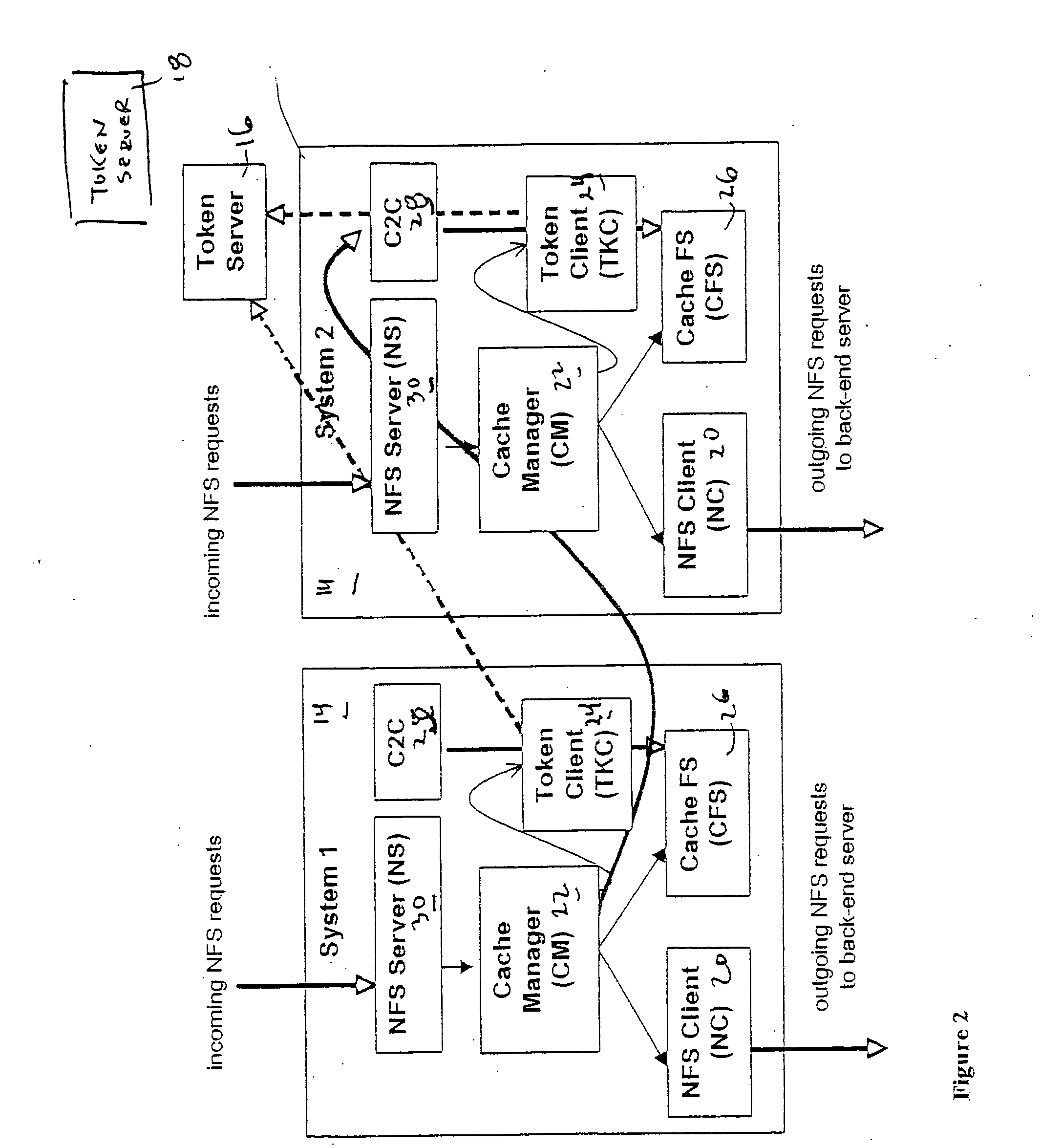File storage system, cache appliance, and method
a file storage system and file technology, applied in the field of data storage, can solve the problems of limited implementation of cache appliances, scalability in a data center environment, and inability to write through operations in the current implementation, and achieve the effects of avoiding the cost of mandatory write-through operations, robust and efficient, and increasing the utility of token management schemes
- Summary
- Abstract
- Description
- Claims
- Application Information
AI Technical Summary
Benefits of technology
Problems solved by technology
Method used
Image
Examples
Embodiment Construction
[0029]Referring now to the drawings wherein like reference numerals refer to similar or identical parts throughout the several views, and more specifically to FIGS. 1 and 2 thereof, there is shown a file storage system 10 for storing data of a file received from a client. The system 10 comprises a back-end file server 12 in which the data is stored. The system 10 comprises a cache appliance 14 in communication with the file server 12, such that the appliance 14 stores portions of the data or attributes of the file, and uses the stored data or attributes to process file system 10 requests received from the client, and which reads and writes data and attributes to the back-end file server 12 independently.
[0030]The present invention pertains to a system 10 for responding to a file system 10 protocol request in regard to a back-end server 12. The system 10 comprises a token server 16. The system 10 comprises a plurality of cache appliances 14 in communication with the token server 16, ...
PUM
 Login to View More
Login to View More Abstract
Description
Claims
Application Information
 Login to View More
Login to View More - R&D
- Intellectual Property
- Life Sciences
- Materials
- Tech Scout
- Unparalleled Data Quality
- Higher Quality Content
- 60% Fewer Hallucinations
Browse by: Latest US Patents, China's latest patents, Technical Efficacy Thesaurus, Application Domain, Technology Topic, Popular Technical Reports.
© 2025 PatSnap. All rights reserved.Legal|Privacy policy|Modern Slavery Act Transparency Statement|Sitemap|About US| Contact US: help@patsnap.com



